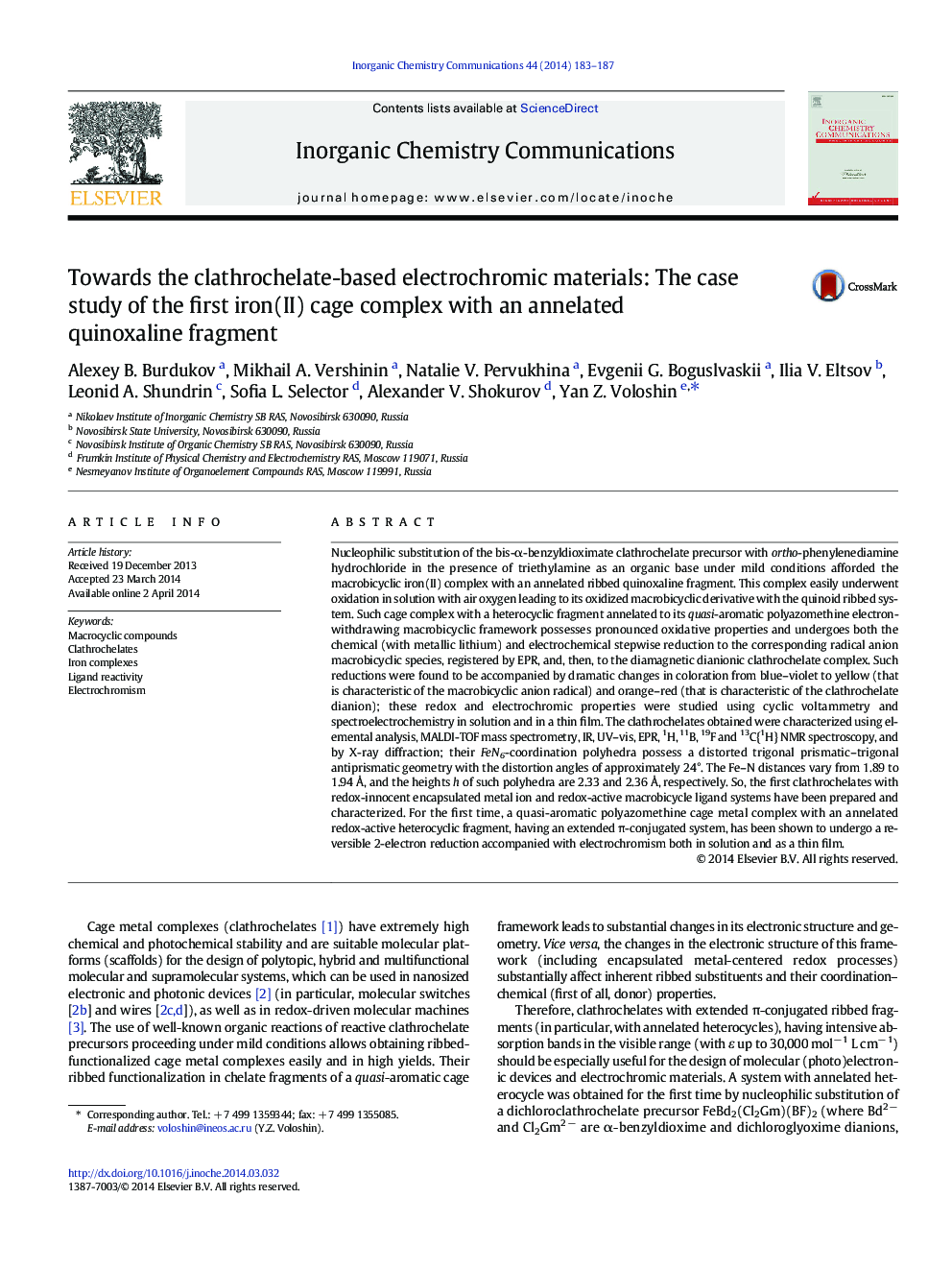| Article ID | Journal | Published Year | Pages | File Type |
|---|---|---|---|---|
| 1301660 | Inorganic Chemistry Communications | 2014 | 5 Pages |
•Iron(II) clathrochelate with an annelated heterocyclic fragment is obtained.•Substitution of iron dichloroclathrochelate gave a complex with a quinoxaline fragment.•Ortho-phenylenediamine is used as a nucleophilic agent.•Quinoxaline-containing iron(II) clathrochelate undergoes chemical oxidation.•Clathrochelate product exhibits electrochromism both in solution and as a thin film.
Nucleophilic substitution of the bis-α-benzyldioximate clathrochelate precursor with ortho-phenylenediamine hydrochloride in the presence of triethylamine as an organic base under mild conditions afforded the macrobicyclic iron(II) complex with an annelated ribbed quinoxaline fragment. This complex easily underwent oxidation in solution with air oxygen leading to its oxidized macrobicyclic derivative with the quinoid ribbed system. Such cage complex with a heterocyclic fragment annelated to its quasi-aromatic polyazomethine electron-withdrawing macrobicyclic framework possesses pronounced oxidative properties and undergoes both the chemical (with metallic lithium) and electrochemical stepwise reduction to the corresponding radical anion macrobicyclic species, registered by EPR, and, then, to the diamagnetic dianionic clathrochelate complex. Such reductions were found to be accompanied by dramatic changes in coloration from blue–violet to yellow (that is characteristic of the macrobicyclic anion radical) and orange–red (that is characteristic of the clathrochelate dianion); these redox and electrochromic properties were studied using cyclic voltammetry and spectroelectrochemistry in solution and in a thin film. The clathrochelates obtained were characterized using elemental analysis, MALDI-TOF mass spectrometry, IR, UV–vis, EPR, 1H, 11B, 19F and 13C{1H} NMR spectroscopy, and by X-ray diffraction; their FeN6-coordination polyhedra possess a distorted trigonal prismatic–trigonal antiprismatic geometry with the distortion angles of approximately 24°. The Fe–N distances vary from 1.89 to 1.94 Å, and the heights h of such polyhedra are 2.33 and 2.36 Å, respectively. So, the first clathrochelates with redox-innocent encapsulated metal ion and redox-active macrobicycle ligand systems have been prepared and characterized. For the first time, a quasi-aromatic polyazomethine cage metal complex with an annelated redox-active heterocyclic fragment, having an extended π-conjugated system, has been shown to undergo a reversible 2-electron reduction accompanied with electrochromism both in solution and as a thin film.
Graphical abstractNucleophilic substitution of a dichloroclathrochelate precursor with ortho-phenylenediamine and further chemical oxidation of the macrobicyclic product gave the iron(II) clathrochelates with annelated quinoxaline and diaminophenylene ribbed fragments; the former exhibits electrochromism both in solution and in a thin film.Figure optionsDownload full-size imageDownload as PowerPoint slide
